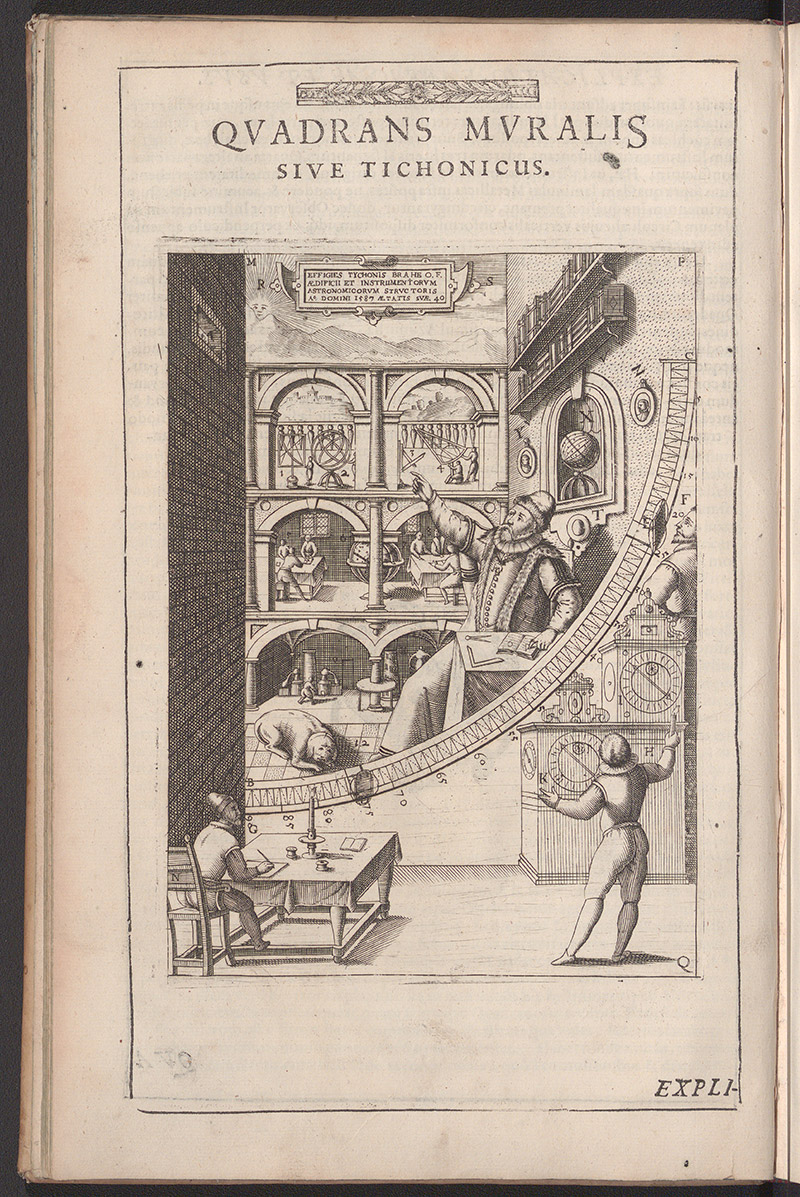Quadrants

- Copperplate engraving depicting a mural quadrant.
- Tycho Brahe (1546-1601).
- Tychonis Brahe Astronomiae instauratae mechanica.
- Nuremberg: Levinus Hulsius, 1602.
An astronomical quadrant is a graduated quarter of a circle used to measure the altitude of celestial bodies above the horizon. Usually, an arm would move over this partial circumference, which was graduated from 0° to 90°. The most accurate of these quadrans was the so-called quadrans muralis (mural quadrans). Tycho Brahe built a mural quadrant of two-meter radius in 1582, which became the most famous astronomical instrument of its kind in sixteenth-century Europe.